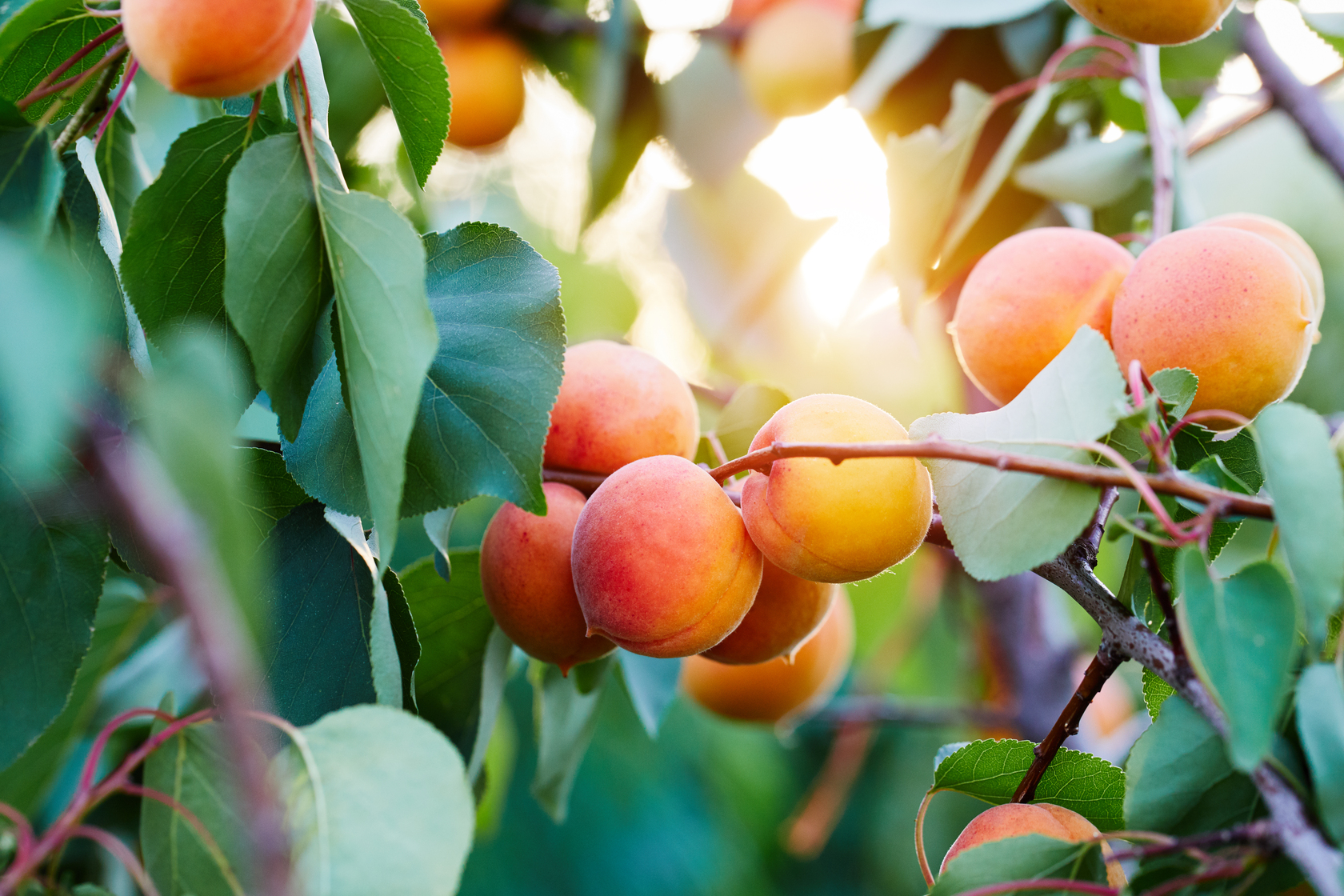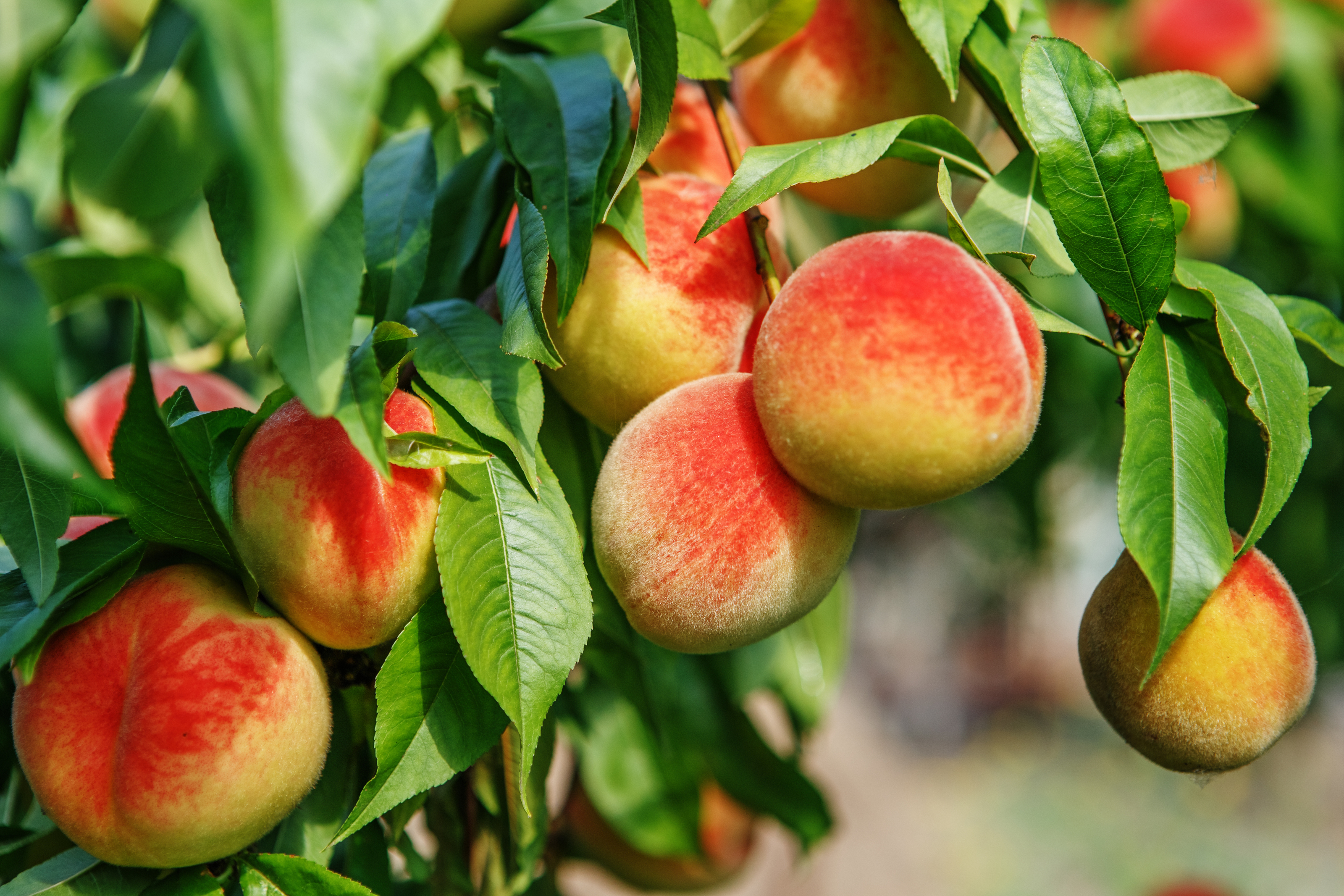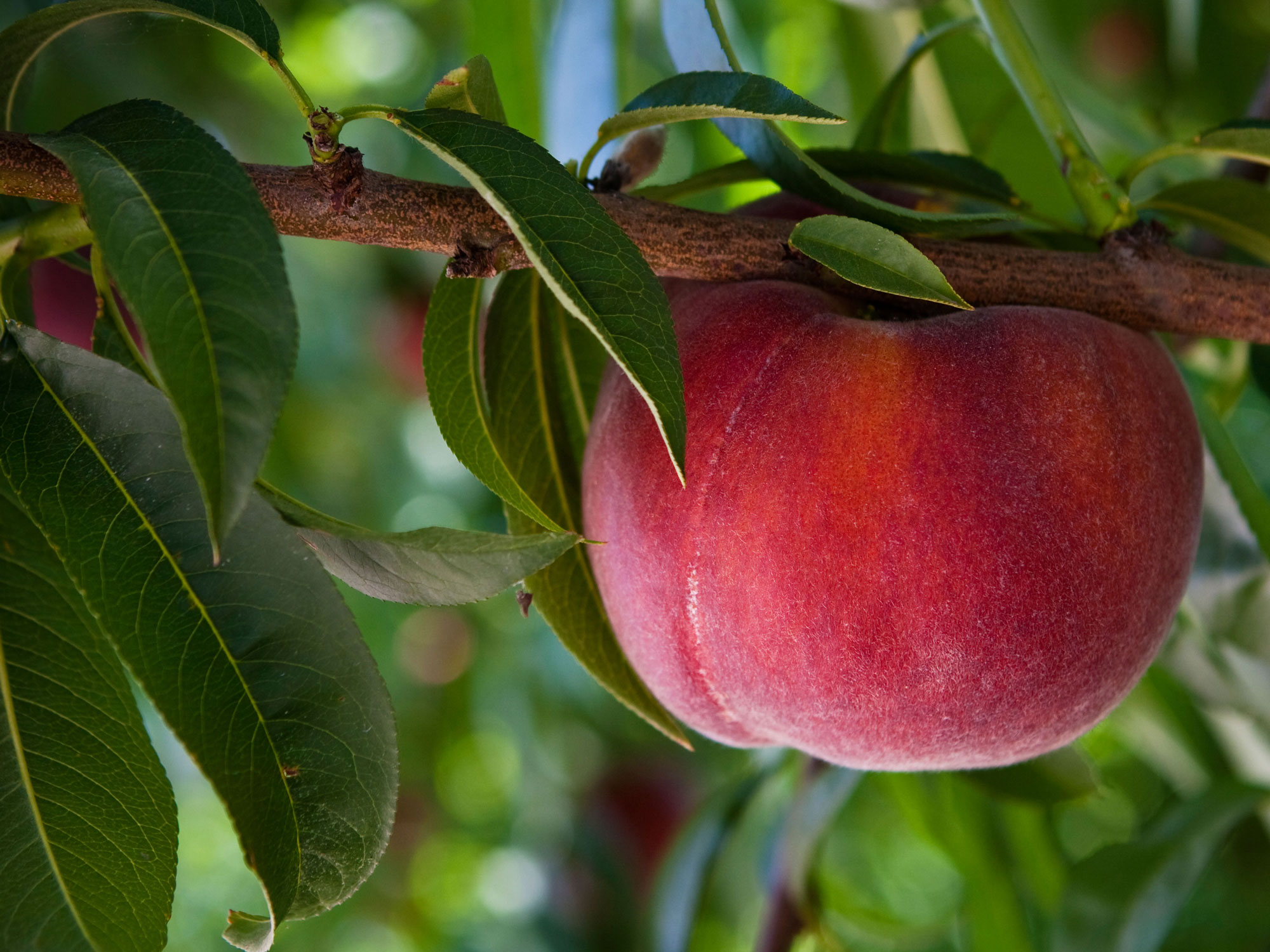
You can't think of summer without dreaming about the delicious fruits that arrive with the season. And fuzzy, juicy peaches are at the top of our list. So if you're looking to take your love for peaches one step further, why not grow your own?
Not only is peach one of the most easy fruit trees to grow but it's also a gorgeous addition to any backyard. With its lush green leaves and fuzzy orange fruits, these trees are undeniably pretty.
Gift your garden a peach tree and enjoy the (literal) fruits of your labor. Whether you bake them in a pie, muddle them for a cocktail, or enjoy them straight off the branch - this is one fruit you won't regret growing.
How to plant peach trees

Where to plant peach trees
In conversation with Allison Jacob of Trimmed Roots, she tells us that with a little know-how and some TLC, you can turn your backyard into a peach paradise. But before you get to actually planting these bare-root fruit trees, Allison recommends finding the right peach for your area. 'Most peach trees love USDA zones 5-8,' she says. 'Since these areas are where winters get cold enough to give them the beauty sleep they need.'
When it comes to planting your peach trees, Allison recommends finding a spot in your yard that gets plenty of sunshine. 'These sun-lovers need at least 6-8 hours of rays each day,' she says.
Planting the peach tree
When you're ready to plant, Allison advises digging a hole twice as wide as the root ball. 'If you've got a standard-sized tree, give it some elbow room - about 18-20 feet from its neighbors. And for those cute dwarf varieties, 5 feet apart will do the trick,' Allison adds.
Gardening expert Tony O'Neill also recommends planting the tree at the same depth it was in the nursery container. 'And ensure the graft union (the swollen area just above the rootstock) is above the soil line to prevent rot,' he adds.
When to plant peach trees
Additionally, Tony tells us that the best time to plant peach trees is in the late winter or early spring while they are still dormant. 'This gives them a head start before the growing season begins,' he notes.
What are the different types of peach trees

Why not elevate your modern garden ideas and plant different fruit varieties for that added color and taste? Like most fruits, peaches are available in many varieties. Based on the type of peach you'd like to harvest, it's best to identify which variety to grow in your garden.
Freestone Varieties: Tony tells us that these varieties have flesh that separates easily from the pit, making them great for fresh eating and baking. 'Elberta' and 'Redhaven' peaches are among the most popular freestone trees.
Clingstone Varieties: When it comes to clingstone peaches, Tony explains that the flesh clings to the pit, making these varieties ideal for canning and preserving. 'Babygold' and 'Springcrest' are notable members of the sort.
Certified arborist, Michael Musinski tells us that these peaches offer a softer texture and heightened sweetness compared to freestones. 'Clingstones are ideal fruits for making jams and preserves,' he notes.
Semi-Freestone Varieties: 'These are a hybrid of freestone and clingstone, with flesh that partially clings to the pit,' explains Tony. He also shares that 'Galaxy' and 'Harvester' are well-known semi-freestone peaches.
Michael points out that this hybrid combines the desired attributes of both types, providing flexibility in cultivation practices and environmental adaptability. 'They thrive in diverse growing conditions and can be enjoyed fresh,' says Michael. 'Or even utilized in various culinary applications, from baking to preserving.'
Depending on the kind of fruit you prefer, you can grow these charming trees out in your garden or even in a pot inside your home. That's right, just when you thought it couldn't get any sweeter, peaches are actually friendly indoor fruit trees. And give you the option of keeping them outside or taking them in.
How to care for peach trees

A little care goes a long way with these fuzzy beauties. And if you're yearning for a bountiful harvest of juicy ripe peaches, here are some expert tips for a healthy tree.
Watering: Tony recommends watering newly planted peach trees deeply to establish strong roots. Once established, he advises gardening enthusiasts to water them regularly, especially during dry periods. This way you can keep the soil moist but not waterlogged - perfect for growing peach trees.
Mulching: Allison's tip for a flourishing peach tree is to spread some mulch around the base of your tree. 'This helps keep the soil moist and stops those pesky weeds from crashing the party,' she says. 'A 2-4 inch layer should do the job nicely.' We love this all-organic mulch blend from Amazon.
Pruning: 'Prune peach trees annually in late winter to early spring to remove dead or diseased wood and to maintain an open center shape,' says Tony. 'This promotes good air circulation and sunlight penetration, reducing disease risk and encouraging fruit production.'
Fertilizing: According to Tony, it's best to treat your peach trees to a dose of balanced fertilizer (10-10-10) to support healthy growth and fruit development. He advises against over-fertilizing as it can lead to excessive vegetative growth at the expense of fruiting.
Whether you plant them using the layered edible gardening technique or opt to simply grow fruit trees in pots, you now have all the tips you need for a real home-farm-to-table experience. And once your trees begin to fruit, you can savor your delectable harvest or gift them in slices, pies, or marmalades to neighbors or guests. Whatever the case, you'll now be an official peach planter and that's a win for your green thumb.
FAQs
What are common problems that affect peach trees?
Like any backyard grow, your fruit might have to cross a hurdle or two before reaching picking season. However, where there are problems, we've also sourced solutions. So here are a couple common issues Tony suggests watching out for, along with cures to help your peaches through them.
Peach Leaf Curl: 'This fungal disease causes distorted, reddish leaves,' says Tony. 'Prevent it by applying a copper-based fungicide in late fall and early spring.'
Brown Rot: This fungal infection affects the fruit, causing it to rot. To prevent it, Tony recommends removing and destroying infected fruit. You can also apply fungicides during the blooming and pre-harvest stages to aid your peaches.
Peach Tree Borer: 'This pest tunnels into the tree trunk, causing damage,' he notes. 'Simply wrap the base of the trunk with a tree guard and apply appropriate insecticides to control infestations.'
Frost Damage: According to Tony, late spring frosts can damage blossoms and young fruit. In such cases, he suggests planting peach trees on higher ground or using frost blankets to protect them during cold snaps.
What soil is best for peach trees?
Michael tells us that peach trees do best in well-drained sandy loam soils. 'Heavy compacted or clay-ridden soils are not conducive,' he points out. 'This is because they can cause physiological disorders such as chlorosis while reducing fruit production.'
Ultimately, Michael explains that a soil pH range of 6-7.5 is optimal, with low salinity.







